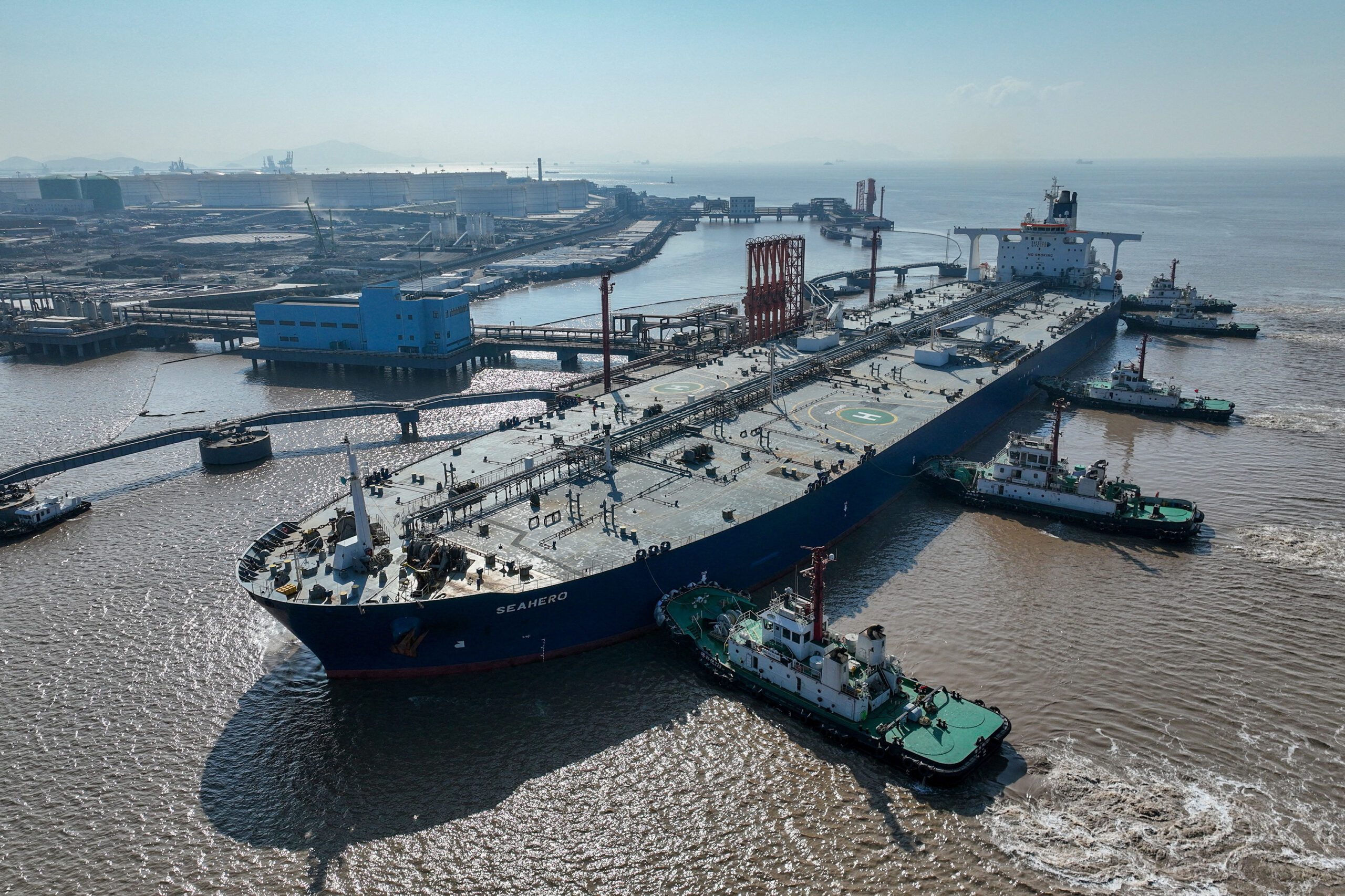By Sherry Su and Julian Lee
Nov 11, 2024 (Bloomberg) – A cargo of Russian oil appears to have been switched between ocean-going tankers near a Spanish exclave in north Africa, restoring a clandestine practice that Madrid thought it had ended last summer.
On Saturday, the Suezmax-class tanker Sakarya left the waters off Ceuta, a once-popular destination for Russian oil switching, with its depth in the water indicating it unloaded cargo. Before then, the ship vanished from digital tracking systems for about 60 hours. Its subsequent known movements, coupled with the fact three supertankers were waiting nearby, suggest it transfered its cargo onto one of them.
No Urals cargo transfers have been conducted near Ceuta since August 2023 after Spain wrote to local firms about the practice, which could lead to breaches of a Group of Seven price cap on Russian oil. Instead, the switching has been taking place all over the world, from the eastern Mediterranean to the Gulf of Oman. The transfers help buyers to create a degree of separation over their cargo purchases.
Before its transponder switched off, tracking systems show that Sakarya collected about 730,000 barrels of Russian oil from Primorsk on the Baltic Sea in October. It then sailed to waters near the exclave, getting there on Nov. 6 and then leaving on Nov. 9, apparently to collect a new cargo.
Another tanker, the Cankiri, which loaded about 1 million barrels from Russia’s main Black Sea export terminal, arrived near Ceuta on Nov. 8. It’s been close to where the Sakarya was since then. It’s depth in the water has remained unchanged, indicating it still has its cargo.
Spokespeople for Spain’s Transport Ministry and the country’s national maritime authorities weren’t immediately available for comment.
Both tankers sail under the flag of Panama, according to a database maintained for the International Maritime Organization.
During the same period as the two tankers were there, three empty supertankers — with capacity to hold about 2 million barrels each — were also nearby.
A combination of cloudy skies that obscured satellite imagery, and the switch off of the Sakarya’s transponder for 2 1/2 days, mean it’s not possible to say which — if any — of the three vessels took its consignment.
Sailing distances to ports that could and would have realistically received the Sakarya’s cargo — and where it was when it re-appeared on digital tracking systems — make it unlikely the tanker delivered cargo to an on-land import terminal.
The West has stepped up efforts to crack down on tankers transporting Russian oil. So far, a total of 91 tankers have been sanctioned by Group of Seven authorities for their involvement in the Russian oil trade since the war in Ukraine began. One was subsequently removed from the list.
© 2024 Bloomberg L.P.

 Join The Club
Join The Club










